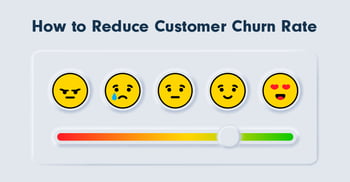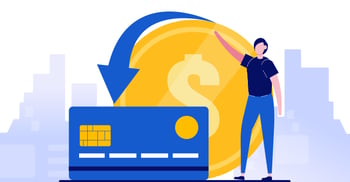
How to Win a Chargeback as a Seller in 8 Steps
If you’re in the SaaS business, you know that it is impossible to escape chargebacks. Unfortunately, they simply come with the territory if you offer digital payments. Across all industries, the average chargeback dispute to transaction ratio is 0.60%, which comes to 6 out of every 1,000 transactions.
At best, they’re an annoyance, but they do come with fees, which many find frustrating since many are not fraudulent transactions. At worst, they can bankrupt a business. Sadly, no business can avoid chargebacks. So SaaS sellers must do their best to fight chargebacks, work proactively to reduce them, and recover lost revenue.
What Is a Chargeback?
A chargeback is when a cardholder contacts the issuer of their credit card and disputes a transaction. This option was designed as a form of consumer protection, shielding customers from unauthorized transactions. Essentially, it allows shoppers to file a dispute against a seller regarding fraudulent transactions or in cases where they did not receive the product or service for which they paid. Instead of dealing with the seller and arguing with them about the transaction's legitimacy or obtaining a refund, a customer can just initiate a chargeback.
When a chargeback is filed, the issuing bank looks to gather compelling evidence and investigates the case by asking the seller to prove the transaction's legitimacy or provide details about how the product or service was delivered. If the bank decides the transaction was fraudulent, they will credit the shopper's account, and more than likely, the merchant receives an extra fee from their payment processor to cover the costs they have been charged.
3 Common Types of Chargebacks
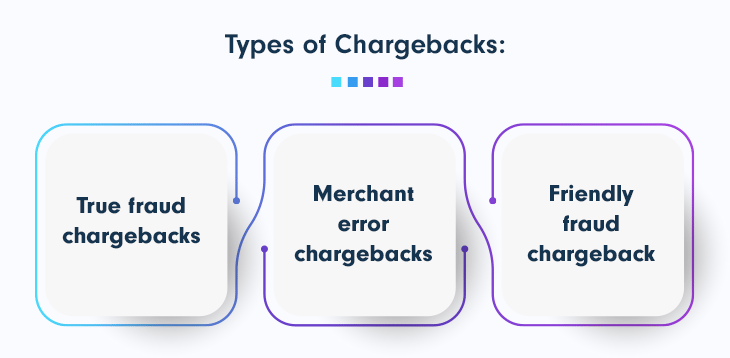
True fraud chargebacks
These are unauthorized purchases where a card was used without the owner’s permission, for example, a stolen credit card. The cardholder then disputes the transaction as unauthorized; their card is frozen, and a new one is issued to avoid any further fraudulent transactions.
Merchant error chargebacks
Here the seller hasn’t held up their end of the purchase agreement. This could be where a customer is unhappy with a product or they never received what they paid for. It could also be a case of a card being charged as a result of a technical or clerical error or even an overcharge.
Friendly fraud chargebacks
Customers will initiate chargebacks based on a fraudulent claim when they either forgot they made the charge or someone who has access to their credit card details made the charge without their full consent. This can often be young adults who didn’t have permission to use their parents card details. This type of chargeback can cause a small business the greatest revenue loss as this type of chargeback has increased significantly over the years. Especially because. customers with successful chargeback are nine times more likely to repeat it.
Reduce Chargebacks: Why it's Important for your SaaS
The seller is often at a disadvantage with most chargebacks, as the consumer protection nature of a chargeback means a “guilty until proven innocent” attitude regarding the seller. And chargebacks can be difficult to win, even when the seller has evidence the consumer has received and is using their product/service. These extra expenses and losses can eat into revenue and cause major problems for sellers with few resources to fall back on. As more transactions are disputed, businesses have to hire more people to handle the labor-intensive task of fighting these chargebacks to keep costs under control and avoid high chargeback rates.
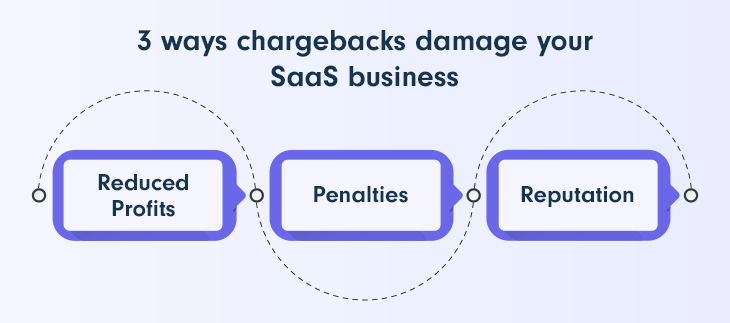
Reduced Profits
By now, you can understand how chargebacks can make a real dent in profits. For SaaS sellers operating on thin margins, losing revenue from sales due to chargebacks can deeply cut profits. You lose not only money but also the product that you sold to the customer as they won’t return it. Also, chargeback disputes take up a large amount of time, as you need to provide documents and evidence to the payment provider. And time is money when you are running a business.
Chargebacks911 suggests that by 2023 the average chargeback will cost $191, based on a $90 average disputed transaction. They estimate that chargebacks will cost the world $117.46 billion by the end of 2023, and sellers will suffer nearly $79 billion of those costs.
Penalties
Sellers with a high chargeback rate will face multiple consequences. This includes monetary penalties and card association fines of up to $100 per chargeback. The industry standard is for businesses to keep a chargeback ratio below 0.9%, which is increasingly more difficult to do with the increasing number of chargebacks and friendly fraud.
For example, both Visa and Mastercard have programs for monitoring sellers with high chargeback ratios, which incentivizes them to take measures to reduce the number of chargebacks they receive. This means that sellers are often immediately refunded rather than suffer the chargeback. So even if they avoid the consequences of a lost chargeback, they still lose by having to refund to beat the clock. Additionally, sellers who enroll or are forced into a chargeback monitoring program due to a high chargeback ratio may be charged additional chargeback fees and a large monthly fine that increases over time.
Your Trusted eCommerce Partner.
Unlock revenue growth with PayPro Global, the all-in-one eCommerce solution that handles everything for you. Take your SaaS business farther and faster.
Reputation
Since chargebacks can not only cost you time and money but hurt your business reputation, it’s pretty obvious that you don’t want your business associated with them in any way. If a seller maintains a high chargeback ratio for too long, their acquirer will likely terminate their merchant account even if they are passing along all the fees because their own reputation will be hurt by the high ratios. This could also result in the seller being added to the MATCH list, an industry blacklist maintained by Mastercard, which will cause great difficulty in the future in finding anyone to process payments for such a business.
8 Steps to Winning Chargebacks as a SaaS Seller
Though chargebacks are undesirable and damaging for SaaS businesses, it’s possible to drastically reduce the number of chargebacks you receive and win those you encounter. But it requires a multi-pronged approach from a team with both experience and knowledge when handling these disputes.
We’ve got 8 tips to get you started on the journey towards fighting chargebacks as a SaaS seller, which will ultimately significantly reduce them and hopefully even prevent some in the future.
1. Be Recognizable to Customers
One of the simplest but most effective ways to reduce chargebacks is to make sure that you provide a clear transaction description. Often customers won’t recognize the charge on their credit card statement and will issue a chargeback. For example, if you use your company's legal name, it may not be familiar to customers. They may know your product brand but not the name behind it if the two names differ. By using a description that matches your website name and branding, you can prevent this from happening.
However, it may require a bit of innovation to create something easy to understand that still falls within the payment processor’s rules. For example, 37Signals reduced their chargebacks by 30% by changing their description to include their business name and a URL that takes you to a page explaining the charge. Keep in mind there is a limited number of characters on the credit card statement, so you cannot provide comprehensive details there.
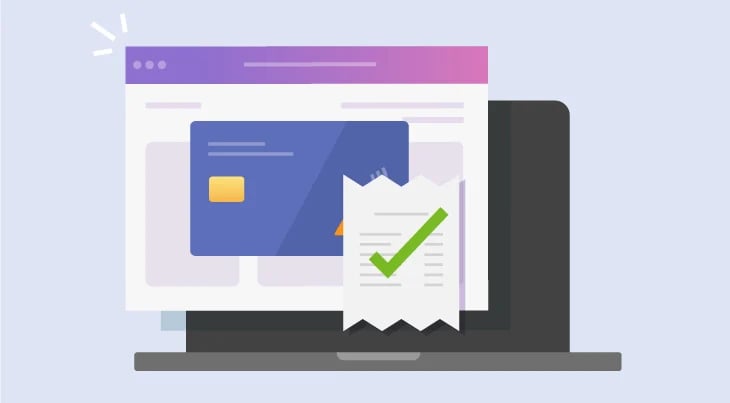
2. Communicate Clearly With Customers
Another way to prevent chargebacks is to ensure that you communicate extremely well with customers whenever there is any type of action or interaction with your business. It is important that merchants understand that a chargeback reason is represented by the customer’s inability to contact the seller. This becomes most important when they reach the purchasing stage. Communicate payment details, delivery estimates, and tracking data to ensure they are kept up to date or informed of any issues. Keep accurate records of online transactions. Always ensure they know what description/business name will appear on their credit card statement. These steps will reduce the likelihood of confusion causing issues that could lead to the shopper initiating chargebacks. Not to mention that having compelling evidence of a transaction will help you win a chargeback dispute.
When customers are unsure about a transaction, they need to be able to contact you quickly and easily. Aim to have as many communication channels as possible that are visible and easy for customers to access. These could include a phone number, email address, physical address (if relevant), social media channels, and a live chat function on your website.
This has a double benefit. Making your communication channels easily accessible will lend authenticity to your business. Then if it comes to chargebacks, customers can communicate with you about any issues, hopefully preventing them from initiating the chargeback process as a next step. So, ensure you respond quickly to any customer communication to prevent an impatient shopper from taking desperate measures.
3. Use Top Quality Credit Card Security and Fraud Prevention Tools
In some cases, true-fraud chargebacks are unavoidable, but these should be few and far between using anti-fraud tools and strong security measures. These powerful tools can help to keep fraud-related chargebacks to a minimum. Effective fraud prevention software will flag suspicious transactions for further investigation, thereby stopping chargebacks before they can even happen.
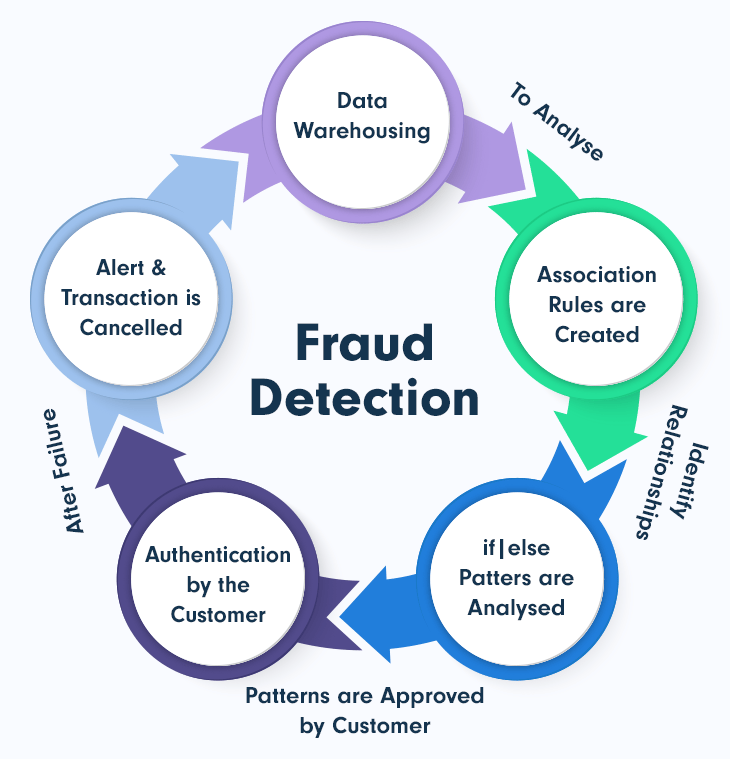
Some advanced tools allow you, as the seller, to intervene in the dispute process, after a customer has contacted their bank to dispute a charge before a chargeback occurs. Systems like chargeback alerts can prevent these chargebacks by providing refunds or additional information that will remind the shopper of who you are and what the product is, which triggers their memory and stops them from calling out fraud. They can also stop disputes before they reach chargeback levels by pausing the chargeback temporarily. The benefit is that the seller will receive an alert when the initial dispute is filed, and they can issue a refund before a chargeback is filed when appropriate.
We’ve also written a comprehensive article on gaming fraud, which contains detailed information on preventing fraud as an online seller, which you may find helpful.
4. Ensure PCI Compliance
Another way to reduce chargebacks is to make sure you are PCI-DSS compliant. PCI-DSS is the official standard for credit card data protection. It requires you to make sure that your business is handling credit card data correctly and without any deviation from mandates and regulations. For instance, one small part of PCI compliance is providing anti-fraud measures that check a credit card's validity and whether it has been used for suspicious transactions in the past.
The best way to achieve PCI compliance is to use a payment gateway already compliant with PCI-DSS. These payment gateways will safely and securely encrypt and transfer credit card data. You can feel confident they will follow all regulations as they have been scrutinized before receiving this stamp of approval.
Your Trusted eCommerce Partner.
Unlock revenue growth with PayPro Global, the all-in-one eCommerce solution that handles everything for you. Take your SaaS business farther and faster.
5. Provide Quality Products and Services
This is generally the best practice for businesses. You always want to create a quality product or render the most effective service possible. But it’s essential when dealing with issues like chargebacks. If your product is of high quality, the customer is less likely to feel like they want their money back. And they are less likely to use chargebacks to get it as they will be satisfied with your support and what they have purchased from you.
It’s also important to ensure that your customers know what to expect from your product. So, keep your marketing and communication realistic. Be careful of overselling your product, as promising more than you can deliver can lead to unrealistic customer expectations. And when they’re disappointed, they’re more likely to take the quickest and easiest route to getting their money back, which is, of course, a chargeback.
6. Implement Excellent Customer Service and Support
The company's customer service department needs to provide your customers with exceptional service at all times. Excellent communication and a positive buying experience will make customers more likely to reach out to you if an issue arises instead of going straight to their bank to file a chargeback. If your customer service and support aren’t satisfactory, a customer could bypass the business entirely out of frustration and go straight to their bank for a faster resolution.
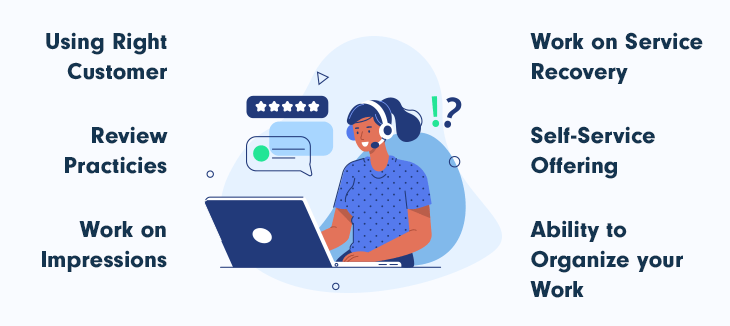
If a customer is dissatisfied with a product, provide them with sufficient opportunity to bring their concerns to you directly and easily. You don’t want them to suffer through long waits on the phone, slow email response times, or unhelpful call center operators. Ensure that your customer support process is efficient, and should a customer request a refund, be prepared to offer them one so that you can handle the problem in-house, avoiding them resorting to issuing a chargeback.
7. Follow the Correct Procedures to Dispute Chargebacks
Only around 60% of merchants dispute their chargebacks, possibly due to inexperience with the process. But sellers have a chargeback win rate of around 21%. The data shows that with the right evidence and the right response strategy, it pays to fight. You must understand what to do when disputing chargebacks to win and avoid costly mistakes. If you understand the process, you can determine the best strategy for winning each chargeback.
If you choose to fight a chargeback, you must submit a rebuttal letter and supporting evidence to prove the chargeback is invalid. The issuing bank will then evaluate this evidence and decide whether to reverse or uphold the chargeback. If the bank decides against you, you can appeal through arbitration. Here the card network will step in to decide the case, with the losing party in the arbitration charged hundreds of dollars in fees.
4 Tips for Effectively Fighting Chargeback:
Check the expiration date.
All chargeback notices have a response deadline, which you must meet.
Research the reason code.
This will explain why the dispute happened and what evidence you can use to fight it.
Collect clear evidence.
You need to persuade the cardholder’s bank to re-evaluate the case. Your evidence will be different, as each case is unique. However, it will generally include evidence that you verified the customer's identity, processed the transaction correctly, gave an accurate product description, and delivered the item as agreed upon.
Write an accompanying rebuttal letter.
It must be a compelling overview of your case.
8. Partner with an eCommerce Solution to Manage Chargebacks
Managing chargebacks is a labor-intensive process to handle on your own, particularly if you are a smaller SaaS seller. Partnering with an eCommerce solution will allow you to hand the time-consuming job of chargeback management over to professionals who can help you win chargebacks with fewer costs and a greater return on investment.
How Can PayPro Global Help?
When it comes to reducing the chargeback rate, the most effective approach is to prevent these disputes instead of fighting them. And that’s when implementing an eCommerce solution comes very much in handy.
PayPro Global is a complete eCommerce solution that provides its users with a wide range of compelling tools sure to give you the level of prevention you need to significantly reduce the number of chargebacks. From robust risk and compliance handling to a smart routing system, exceptional customer service, and stop chargebacks, PayPro Global helps you stop chargebacks before they take place.
Concluding Thoughts on Winning Chargebacks as a SaaS Seller
Chargebacks can be a real thorn in the side of SaaS sellers. They reduce your profits and can be time-consuming to manage. But by following the steps in this article, you can win these disputes and give your business the best chance of long-term success in this growing problem companies everywhere are facing.
As a business owner, it’s important to know the steps you can take to win a chargeback. Having the right tools in your arsenal is key to success.
PayPro Global offers a unique Merchant of Record model, handling all your payment processing needs and providing complete tax management as well as innovative fraud prevention tools to protect your business, recover revenue and drive growth.
We can help with compliance, online payments, and customer support and provide you with all the sales and marketing tools needed to run your company. Our experience with a well-thought-out process to tackle chargebacks will save your business both time and money, as well as your reputation. Contact us today to learn more about how we can help you grow your business and keep those pesky chargebacks at bay.
Meir Amzallag
Co-founder and CEO of PayPro Global
Ioana Grigorescu
Content Marketing Manager at PayPro Global
Meir Amzallag
Co-founder and CEO of PayPro Global
Ioana Grigorescu
Content Marketing Manager at PayPro Global
Hanna Barabakh
Hanna Barabakh is a Brand Ambassador at PayPro Global
Adina Cretu
Adina Cretu is a Content Marketing Manager at PayPro Global
Know first. Act fast.
It doesn’t take luck to make it, but it does take knowledge. Be the first to learn the latest industry insights and must know marketing tips and tricks. Sign up and enjoy! Always informed. Never Spammed.






